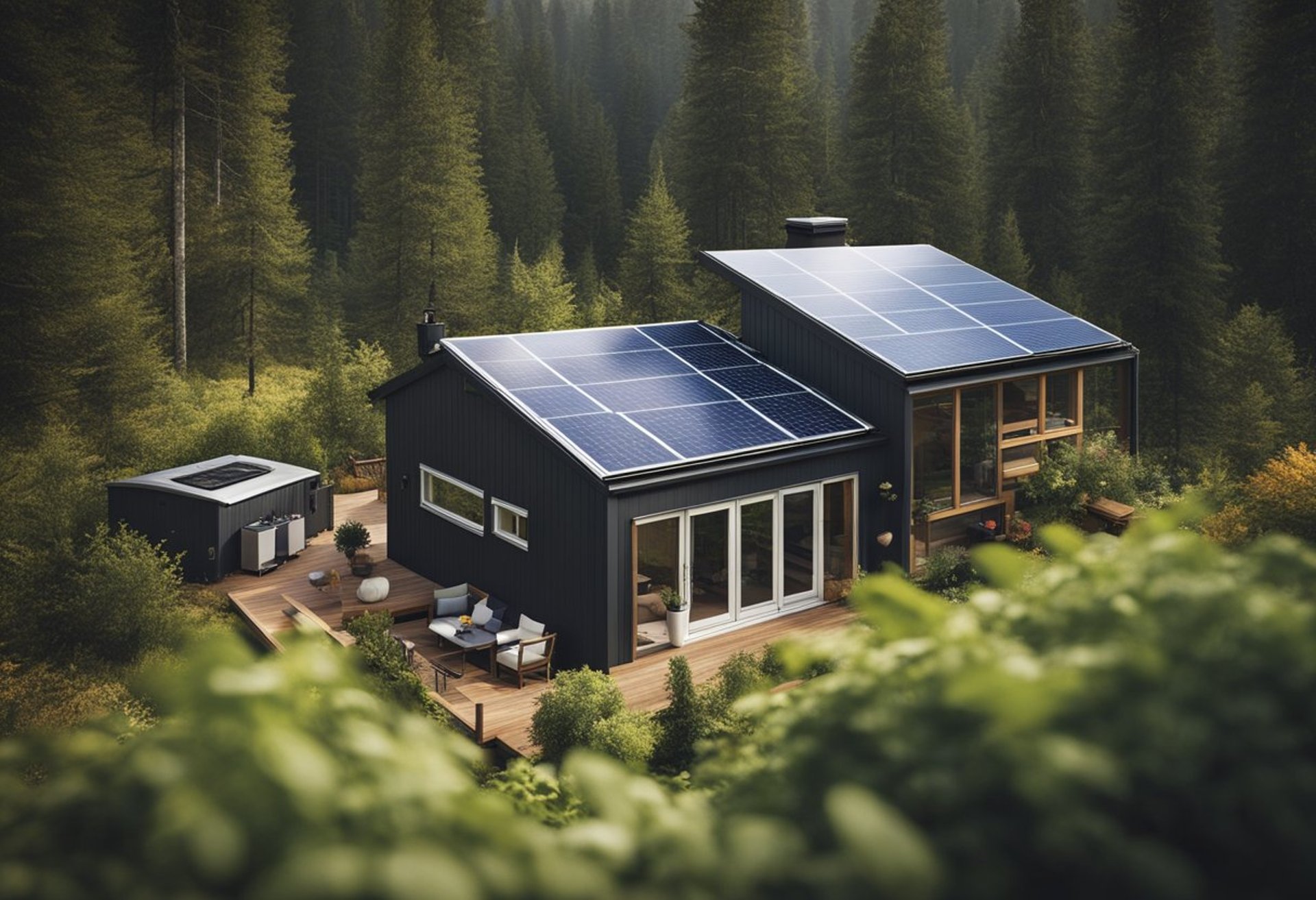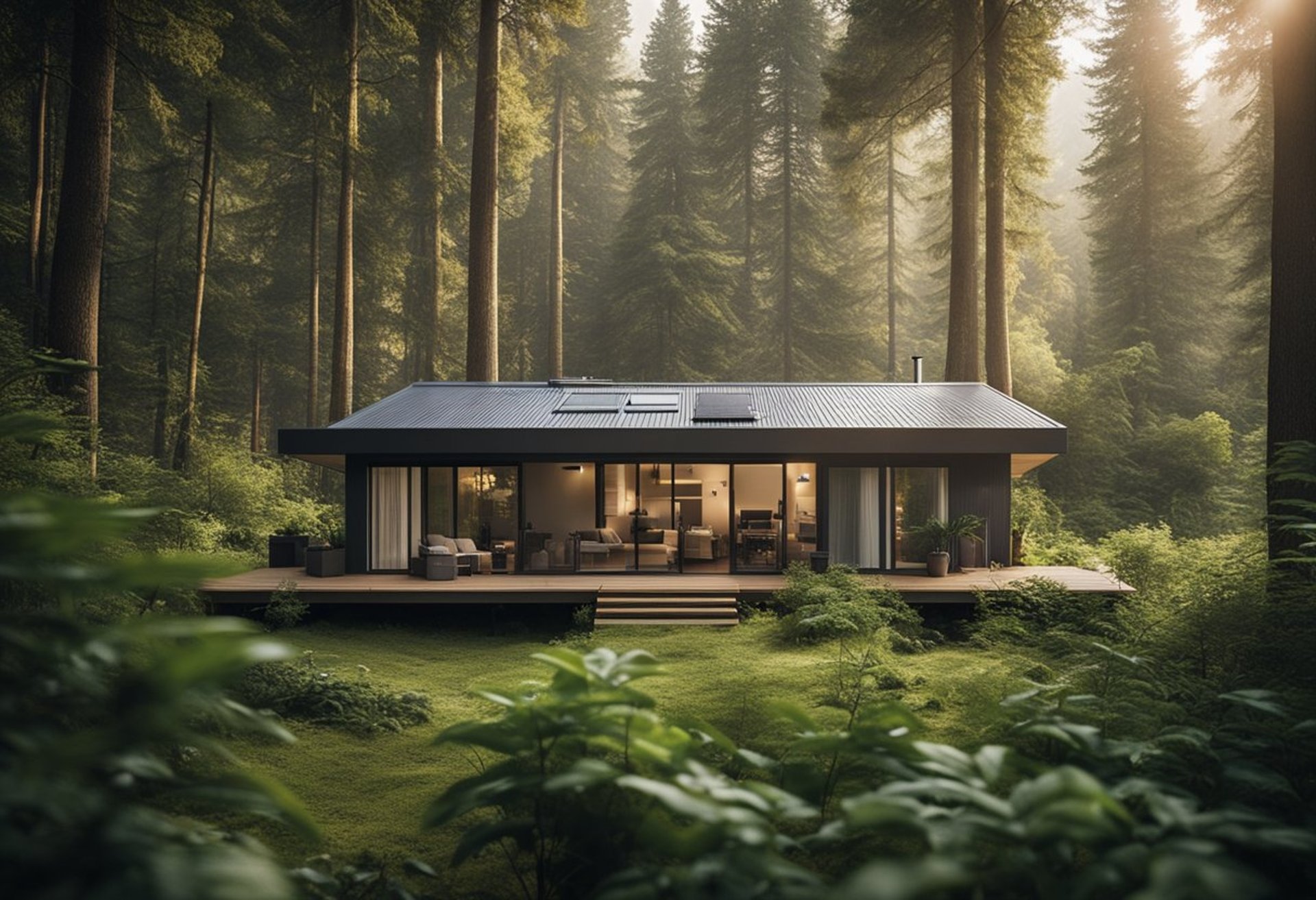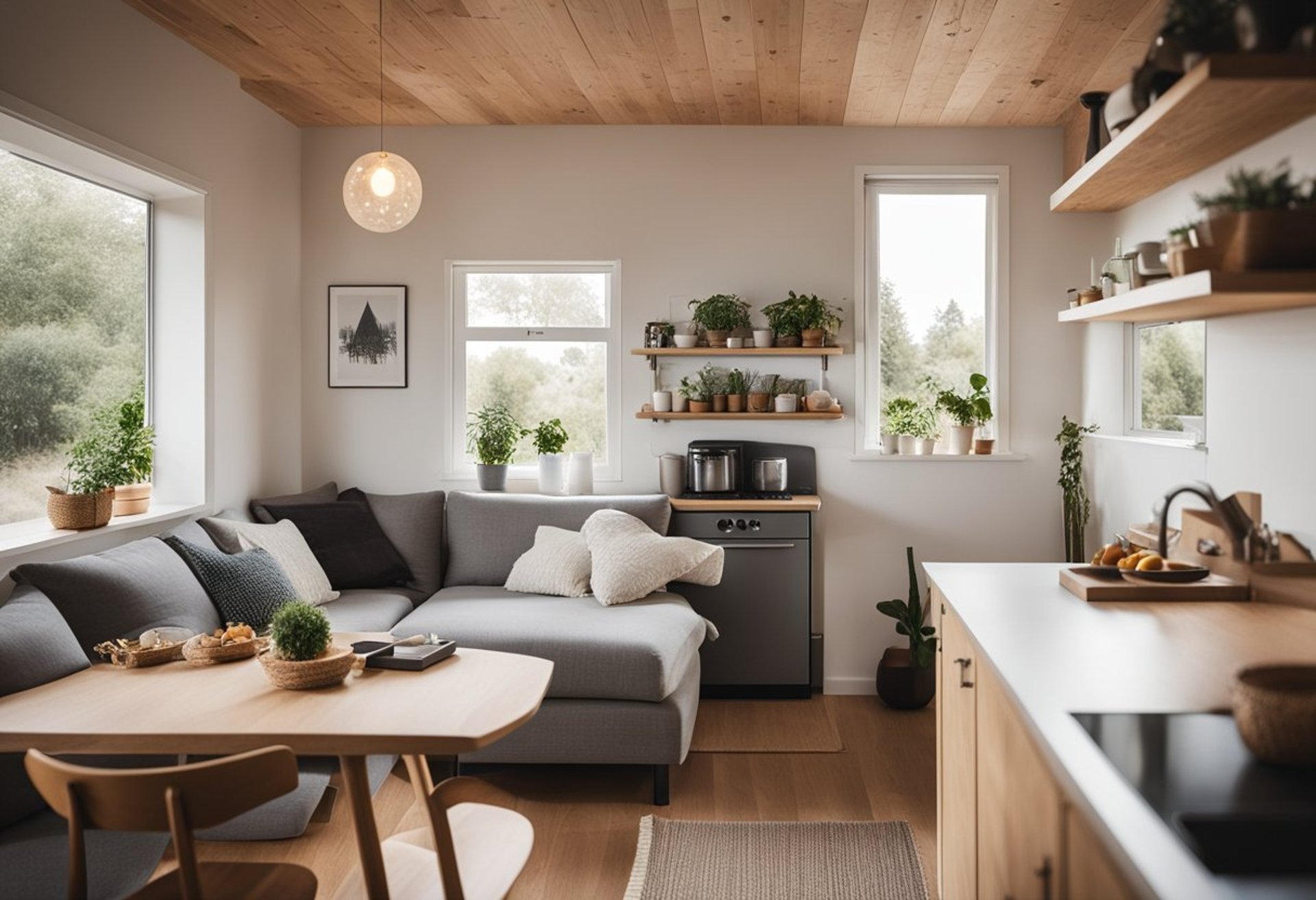3 Bedroom Off Grid House: Designing for Sustainable Living
Building a 3-bedroom off-grid house presents an exciting opportunity for those seeking sustainable living. This type of home can effectively harness natural resources, providing independence from traditional utilities. By focusing on design, energy solutions, and efficient space utilization, homeowners can create a functional and environmentally friendly dwelling.
Integrating essentials like energy sources, water management, and waste systems is crucial for success in off-grid living. Careful planning ensures that the house meets the needs of its occupants while maintaining minimal environmental impact. This exploration into off-grid design will guide readers through the essential elements necessary for a comfortable and self-sufficient lifestyle.
Key Takeaways
Sustainable design is key for off-grid homes.
Effective energy and water management are essential.
Space efficiency enhances comfort in smaller living areas.
Design Principles for Off-Grid Living
Effective design for off-grid housing focuses on leveraging natural elements, energy efficiency, and sustainability. Key strategies include maximizing natural lighting, incorporating passive solar heating, and ensuring efficient insulation.
Maximizing Natural Lighting
Natural lighting is essential in off-grid homes to reduce reliance on artificial sources. Strategic window placement enhances light penetration. South-facing windows are particularly effective, allowing sunlight to warm the home throughout the day.
Use skylights to introduce light to darker areas without sacrificing wall space. Choosing high-performance windows minimizes heat loss. Transparent or translucent materials can also provide light while maintaining privacy.
Incorporating light-colored surfaces and reflective finishes can enhance brightness indoors. Utilizing operable windows supports airflow and passive cooling, especially in warmer months. A thoughtful approach to natural lighting reduces energy needs significantly.
Incorporating Passive Solar Heating
Passive solar heating utilizes building orientation and materials to capture and store heat. Designing homes with a south-facing orientation maximizes sun exposure during winter months while minimizing heat gain in summer.
Thick walls made from thermal mass materials, such as concrete or stone, retain heat during the day and release it at night. Incorporating overhangs allows direct sunlight to enter in winter while shading the windows in summer.
Ventilation strategies, such as clerestory windows, can enhance air circulation. These features help maintain a comfortable temperature without mechanical systems. A detailed design can optimize temperature control year-round.
Ensuring Efficient Insulation
Effective insulation minimizes heat loss and improves energy efficiency in off-grid houses. Selecting high-quality insulation materials is crucial. Common options include fiberglass, foam board, and cellulose, each offering distinct advantages.
Proper installation is important to avoid thermal bridges that can compromise insulation effectiveness. Attention to gaps and seams is essential for achieving optimal performance.
In addition to walls, attention should be given to the roof and foundation to ensure a comprehensive insulation strategy. Using air-tight construction methods can improve overall energy conservation, making the home more comfortable and sustainable throughout the year.
Energy Solutions for 3-Bedroom Off-Grid Houses
Effective energy solutions are essential for ensuring a comfortable and sustainable lifestyle in a 3-bedroom off-grid house. By utilizing various renewable energy sources and efficient management systems, residents can meet their energy needs while minimizing environmental impact.
Solar Power Systems
Solar power systems are among the most popular options for off-grid homes. They consist of solar panels that convert sunlight into electricity, which can power appliances, lights, and more.
Key Components of Solar Power Systems:
Solar Panels: Typically installed on rooftops, these panels capture sunlight and generate energy. The number needed depends on energy consumption.
Inverters: Convert direct current (DC) from the panels to alternating current (AC) for household use.
Mounting Equipment: Ensures panels are securely positioned to optimize sunlight exposure.
Solar systems may include tracking solutions that adjust panel positions throughout the day. Incentives and rebates can help offset initial installation costs.
Wind Turbine Options
Wind energy can complement solar systems effectively. Small wind turbines are suitable for residential use, producing energy when wind conditions are favorable.
Considerations for Wind Turbines:
Site Assessment: Wind speeds should be measured to evaluate potential energy generation. Areas with average speeds of 10 mph or more are ideal.
Turbine Size: Generally ranges from 400 watts to 10 kW. The right size ensures meeting energy demands while accommodating local regulations.
Installation Location: Elevated spots away from obstructions enhance wind capture.
Combining wind and solar can lead to a more reliable energy supply, especially in varying weather conditions.
Battery Storage and Management
Battery storage systems are crucial for off-grid houses. They store energy generated from renewable sources, allowing for consistent power availability.
Key Aspects of Battery Storage:
Types of Batteries: Lithium-ion and lead-acid batteries are popular. Lithium-ion offers longer lifespan and efficiency, while lead-acid is often more affordable.
Capacity and Sizing: The total storage capacity should align with energy consumption patterns. A household may require a system that can support multiple days of usage without sunlight or wind.
Management Systems: Smart management systems optimize energy use, monitor battery health, and provide insights via apps or interfaces.
Effective battery storage enhances energy independence, ensuring access to power even during periods of low generation.
Water Collection and Waste Management
Efficient water collection and waste management are essential for a sustainable off-grid lifestyle. Implementing effective systems ensures a reliable water supply and eco-friendly waste disposal.
Rainwater Harvesting Techniques
Rainwater harvesting involves collecting and storing rainwater for various uses. This method can provide a significant portion of the water supply for a three-bedroom off-grid house.
Key Components:
Collection Surface: Roofs made from non-toxic materials enable safe water collection.
Gutters and Downspouts: These direct rainwater into storage tanks, minimizing loss.
Storage Tanks: Options include above-ground cisterns or buried tanks, sized based on average rainfall and household needs.
To maximize efficiency, homeowners should consider installing first flush diverters. This system ensures the initial debris-laden runoff is discarded before clean water enters the storage tank.
Greywater Systems
Greywater systems recycle water from sinks, showers, and washing machines. This approach conserves fresh water while redirecting used water to valuable applications.
System Components:
Collection: Sink and shower drains are connected to a greywater tank.
Filtration: Simple filters remove solids to prevent clogs.
Distribution: Greywater can be used for irrigation, using drip systems to reduce evaporation.
It is vital to use environmentally friendly soaps and detergents to avoid contaminating the reused water. Local regulations should also be checked to ensure compliance with greywater use.
Composting Toilets
Composting toilets offer a sustainable solution for waste management in an off-grid setup. These systems treat human waste through decomposition, turning it into usable compost.
Benefits:
Water Conservation: These toilets use minimal or no water compared to traditional systems.
Nutrient-Rich Compost: The end product can enrich soil in garden areas, promoting plant growth.
A well-designed composting toilet includes ventilation systems to control odor and promote aerobic decomposition. Regular maintenance, such as turning the compost, ensures efficient breakdown of waste.
Structural Considerations
Structural considerations are essential when building a 3-bedroom off-grid house. The choices made during construction will impact sustainability, durability, and maintenance. Key aspects include selecting appropriate materials, understanding the foundation type, and planning for long-term upkeep.
Choosing Sustainable Building Materials
Selecting sustainable building materials is crucial for an off-grid home. Options like bamboo, reclaimed wood, and straw bales offer excellent insulation and reduce environmental impact.
Key materials include:
Bamboo: Fast-growing and strong.
Reclaimed Wood: Reduces waste and adds character.
Straw Bales: Provides exceptional insulation.
These materials not only enhance energy efficiency but also lower the carbon footprint. Additionally, using non-toxic finishes and paints ensures a healthier indoor environment. Attention to life cycle sustainability can guide choices that benefit both the homeowner and the ecosystem.
Understanding Foundation Types
The foundation of the house supports its structure and contributes to overall stability. Off-grid homes commonly use a few types of foundations:
Slab: Cost-effective and suitable for warmer climates.
Crawl Space: Provides access to plumbing while allowing ventilation.
Basement: Offers additional living or storage space but requires careful waterproofing.
Factors like soil type, climate, and elevation influence the choice of foundation. It is important to consider local building codes and potential seismic activity when deciding on the foundation style. A well-chosen foundation enhances both safety and energy efficiency.
Planning for Durability and Maintenance
Planning for durability involves selecting features that withstand environmental challenges. Off-grid homes face unique weather conditions that affect longevity.
Critical elements to consider:
Roofing: Metal or tile roofs have extended lifespans and resist weather.
Windows: Double or triple glazing enhances energy efficiency.
Sealants: High-quality sealants prevent moisture intrusion and air leaks.
Routine maintenance checks are essential to prevent small issues from developing into major repairs. Using materials and designs that reduce maintenance needs will help keep the home functional and comfortable for years. Prioritizing durability ensures financial savings and sustainability in the long term.
Interior Layout and Space Efficiency
A well-designed interior layout maximizes functionality and comfort in a 3-bedroom off-grid house. By considering common areas, private spaces, and effective storage solutions, residents can create a harmonious living environment that fits their needs.
Functional Design for Common Areas
Common areas serve as the heart of the home, where family members gather. An open floor plan can enhance the flow between the living room, dining space, and kitchen, promoting interaction.
Key features include:
Multi-purpose furniture: Folding tables and modular seating can adapt to different activities.
Natural light: Large windows or skylights can invite sunlight, making the space feel larger.
Efficient layout: Positioning the kitchen adjacent to the dining area facilitates easy serving and cleanup.
These elements contribute to a welcoming atmosphere, ideal for both gatherings and daily activities.
Private Spaces and Personal Retreats
Bedrooms should prioritize comfort and privacy while being functional. Each of the three bedrooms can be designed to accommodate various uses, such as sleeping, working, or relaxing.
Considerations include:
Zoning: Position bedrooms away from common areas to reduce noise.
Natural materials: Using wood or bamboo promotes a calm atmosphere.
Adaptable setups: Desks can be integrated into bedroom designs for dual-use functionality.
Creating a personal retreat fosters a sense of peace, essential for relaxation.
Storage Solutions
Efficient storage is critical in maintaining an organized environment. Off-grid living often requires minimizing excess belongings, so every square inch counts.
Effective solutions include:
Built-in cabinetry: Utilizing wall space reduces clutter and maintains aesthetic appeal.
Vertical storage: Tall shelving units can hold seasonal items and maximize floor space.
Under-bed storage: Storing items beneath the bed can free up room and keep spaces tidy.
Incorporating these strategies promotes a clean and functional living space, ideal for off-grid lifestyles.












